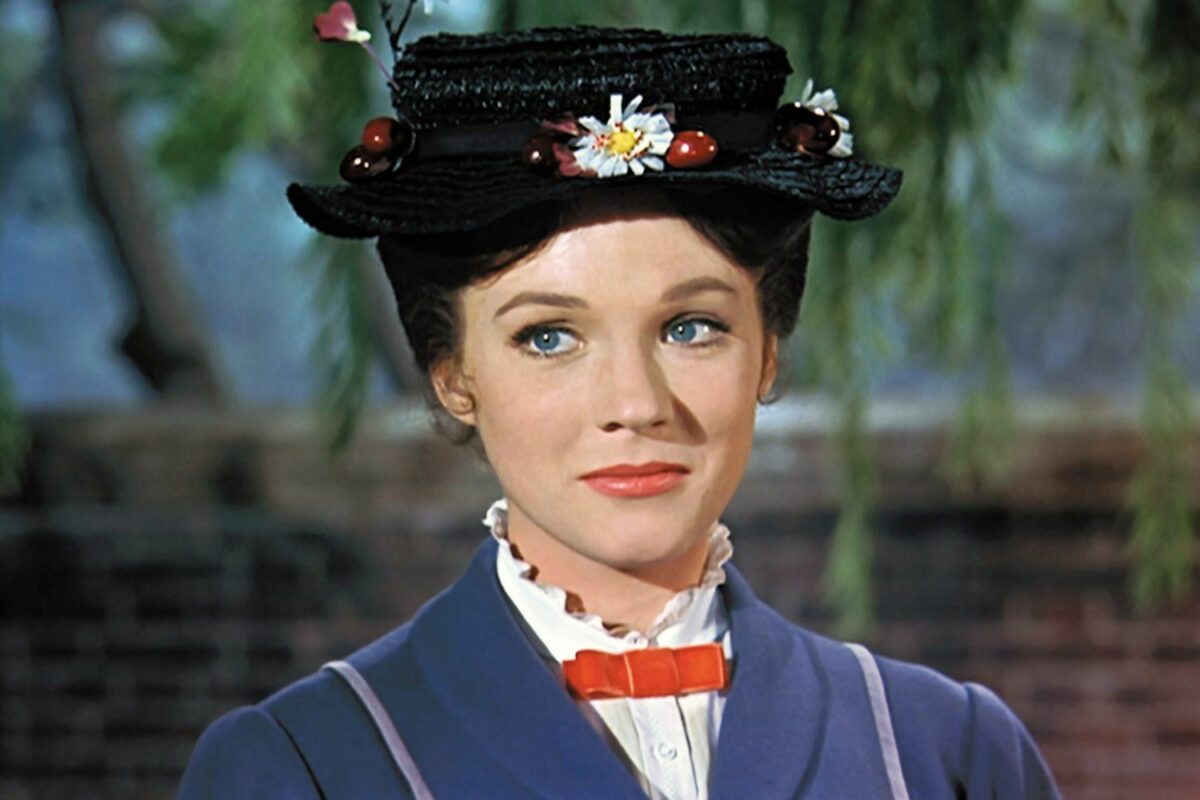Introduction: In the vibrant and tumultuous era of the 1960s, amidst the cultural shifts and musical revolutions, one name shone brightly as the epitome of grace, talent, and timeless elegance: Julie Andrews. With her angelic voice, impeccable acting skills, and captivating stage presence, Julie Andrews emerged as a true icon of the decade, captivating audiences around the world with her performances on stage, screen, and record. In this extensive tribute, we delve into the life, career, and legacy of Julie Andrews, exploring her unparalleled contributions to music and entertainment during the swinging sixties.
Early Life and Career Beginnings: Julie Andrews was born Julia Elizabeth Wells on October 1, 1935, in Walton-on-Thames, Surrey, England. From a young age, she displayed a prodigious talent for singing and performing, captivating audiences with her crystal-clear soprano voice and magnetic stage presence. Andrews made her stage debut at the tender age of 12, performing in a Christmas pantomime at London’s Hippodrome Theatre.
Her breakthrough came in 1954 when she landed the lead role of Eliza Doolittle in the Broadway production of “My Fair Lady,” earning rave reviews for her stunning vocal performances and impeccable portrayal of the Cockney flower girl. Although she was passed over for the film adaptation in favor of Audrey Hepburn, Andrews’ star continued to rise, leading to her next iconic role that would define her career.
“The Sound of Music” and International Stardom: In 1965, Julie Andrews skyrocketed to international fame with her iconic portrayal of Maria von Trapp in the film adaptation of Rodgers and Hammerstein’s “The Sound of Music.” The film, directed by Robert Wise, became a cultural phenomenon and one of the highest-grossing films of all time, cementing Andrews’ status as a global superstar.
Andrews’ performance as the spirited and nurturing Maria captivated audiences of all ages, while her exquisite renditions of timeless songs such as “My Favorite Things,” “Do-Re-Mi,” and “Climb Ev’ry Mountain” became instant classics. Her portrayal of Maria earned her an Academy Award nomination for Best Actress, further solidifying her reputation as one of Hollywood’s brightest talents.
Musical Accomplishments and Collaborations: Beyond her iconic role in “The Sound of Music,” Julie Andrews’ musical talents extended to a diverse range of projects and collaborations throughout the 1960s. In 1960, she released her debut solo album, “The Lass with the Delicate Air,” showcasing her remarkable vocal range and versatility across a selection of classical and contemporary songs.
Throughout the decade, Andrews continued to delight audiences with her enchanting voice and charismatic performances in numerous stage productions, television specials, and concert tours. She collaborated with renowned composers and lyricists such as Richard Rodgers, Stephen Sondheim, and Alan Jay Lerner, bringing their timeless melodies to life with her signature grace and elegance.
In 1964, Andrews starred in the film adaptation of “Mary Poppins,” directed by Walt Disney, further showcasing her extraordinary talent as both an actress and singer. Her portrayal of the magical nanny earned her the Academy Award for Best Actress, making her the first performer to win an Oscar for a Disney film.
Legacy and Influence: Julie Andrews’ influence on music and entertainment in the 1960s and beyond is immeasurable, leaving an indelible mark on popular culture that continues to resonate to this day. Her pristine vocal technique, impeccable diction, and innate musicality set the standard for generations of performers to come, inspiring countless artists to pursue their dreams and strive for excellence in their craft.
Beyond her artistic achievements, Andrews’ philanthropic endeavors and advocacy work have earned her admiration and respect around the world. She has dedicated her time and resources to various charitable causes, including children’s education, arts education, and medical research, using her platform to make a positive impact on the lives of others.
Today, Julie Andrews remains a beloved and revered figure in the world of music and entertainment, cherished by audiences of all ages for her timeless contributions to the art form. Her legacy as “The Voice of Music in the 60s” endures as a testament to her enduring talent, integrity, and enduring spirit, ensuring that her music will continue to enchant and inspire audiences for generations to come.
Conclusion: In a decade defined by social upheaval, cultural transformation, and musical innovation, Julie Andrews emerged as a beacon of hope, joy, and inspiration, captivating audiences with her angelic voice, unparalleled talent, and unwavering grace. From her iconic roles in “The Sound of Music” and “Mary Poppins” to her numerous stage performances and recordings, Andrews’ influence on music and entertainment in the 1960s remains unparalleled, leaving an indelible mark on popular culture that continues to resonate to this day. As we celebrate her legacy as “The Voice of Music in the 60s,” we honor Julie Andrews for her extraordinary contributions to the world of music, theater, and film, and we are reminded of the timeless power of her artistry to uplift, inspire, and enchant audiences around the world.
